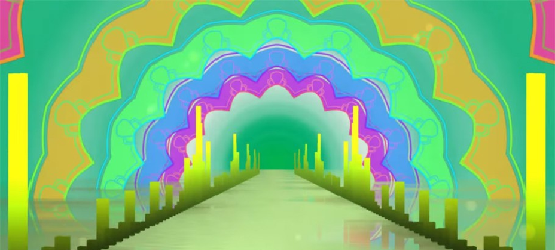In order to kick off PlayStation VR Conversations with a bang, we talked to Jon Carter, the creative director of Harmonix’s upcoming PlayStation VR title. Called Harmonix Music VR, it’s an interactive music visualizer that lets you “climb inside” music.
Find out below how Harmonix Music VR is enhanced by being on PlayStation VR, and what the music game gurus over at Harmonix have learned about developing for…







